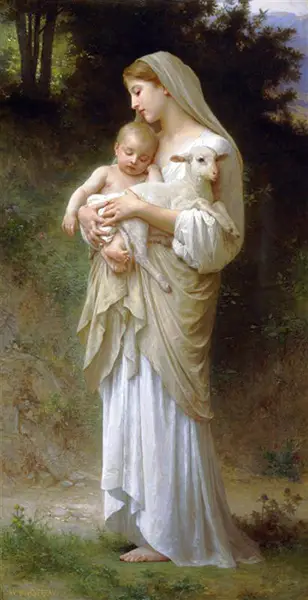 Buy Art Prints Now
Buy Art Prints Nowfrom Amazon
* As an Amazon Associate, and partner with Google Adsense and Ezoic, I earn from qualifying purchases.
Born in November 1825, William-AdolpheBouguereau is certainly one of the greatest artists in history. He was a renowned French academic painter in his time and was a staunch traditionalist whose themes and paintings carried a heavy emphasis on the female body.
In his early painting days, he had great popularity in the United States and France, and he received many honours and prices for his work. Towards his death in August 1905, he had produced a total of 822 finished paintings.
The assiduous painter used traditional methods in his paintings and mostly employed oil sketches and pencil studies. His work translated to an accurate and perfect rendering of the human form. The paintings he produced of hands, feet and skin particularly were the perfect view his admirers appreciated. Erotic and religious symbolism such as the broken pitcher, which signified lost innocence was also used.
Innocence
William-AdolpheBouguereau painted L’Innocence in 1893. In this painting, he followed the 16th-century style. He seemed to follow the footsteps of Raphael who was inspired by the ancients, yet no one accused him of being unoriginal. In most of his works, he adopted the classical approach to subject matter, form and composition. Throughout the 1800s he was involved in painting for the Catholic Church.
In Innocence, the Virgin Mary is seen holding her sleeping son Jesus on one hand, and on the other, a little lamb. The painting signifies the future sacrifice of Jesus. It is viewed as the perfect gift for an expectant mother, where she can hang in the nursery or a present to a woman who has already given birth to celebrate her newborn. The painting featured in a wood frame can be found in three sizes including 12x24, 8x16 and 5x10.
To many, William-AdolpheBouguereau epitomised refinement and taste in his works and respect for tradition. American millionaires who considered his work important made purchases during his lifetime. The graceful portraits of women were highly appreciated for being charming, and also because he could capture attention with a beautiful background. Classical subjects embraced Christianity and paganism.
His idealised work brought to life nymphs, goddesses, shepherdesses, and bathers. He was also a great portrait painter, but most of the paintings are now in the hands of wealthy patrons. Today, more than a hundred museums around the world exhibit William-AdolpheBouguereau’s works.




